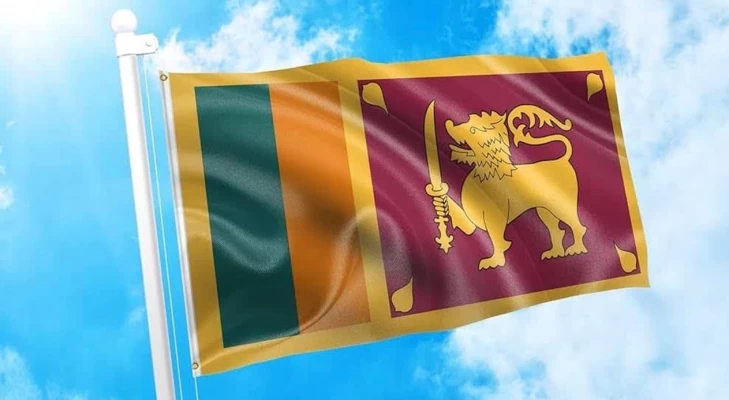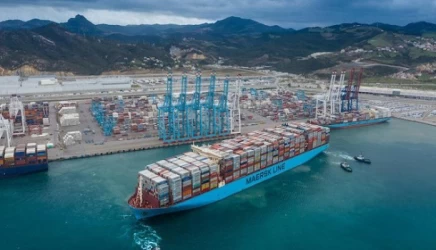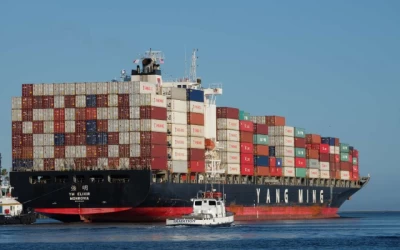Guide to trade with Sri Lanka, sea freight
Sri Lanka, strategically located in the Indian Ocean, is a vital hub for international trade, particularly in South Asia. With its well-developed port infrastructure and growing economy, Sri Lanka has become a significant trading partner for many countries. This guide explores the key aspects of trading with Sri Lanka, focusing on maritime transport, the country's economy, trade regulations, and logistical considerations.
1. Strategic Importance of Sri Lanka
Sri Lanka's location at the crossroads of major shipping routes between Asia, the Middle East, and Africa has made it a crucial player in global trade. The country’s proximity to major economies such as India and China further enhances its importance as a trade and logistics center. Its ports serve as a gateway for goods moving between the Eastern and Western hemispheres.
2. Sri Lanka’s Economy
Sri Lanka has a diverse economy that is driven by agriculture, manufacturing, and services, with key industries including tea production, textiles, rubber, and tourism.
Key Export Sectors:
- Tea: Sri Lanka is one of the largest producers and exporters of tea globally, with Ceylon tea being a recognized brand worldwide.
- Textiles and Garments: The textile and garment industry is one of Sri Lanka’s largest export sectors, supplying to major brands and retailers worldwide.
- Rubber and Coconut Products: Rubber and coconut-based products are also significant contributors to the country's exports.
Key Imports:
Sri Lanka primarily imports machinery, refined petroleum, vehicles, and chemical products. The country relies on imports for a large portion of its industrial and consumer goods.
3. Trade Regulations and Policies
Sri Lanka is a member of the World Trade Organization (WTO), and its trade policies are aligned with international standards. However, it is essential to be aware of specific regulations when importing or exporting goods to or from Sri Lanka.
Import Duties and Taxes:
- Import Tariffs: Tariff rates vary based on the type of goods. Consumer goods generally attract higher tariffs compared to industrial products and raw materials.
- Value Added Tax (VAT): The standard VAT rate in Sri Lanka is around 8-15%, depending on the type of product.
Import/Export Licenses:
Certain goods, including pharmaceuticals, food products, and chemicals, may require special permits or licenses for import or export. Export of some agricultural and industrial products is also subject to regulation.
4. Maritime Transport to Sri Lanka
Maritime transport is the backbone of Sri Lanka’s trade. The country’s ports are well-developed and cater to both bulk and container shipping. The Port of Colombo is the largest and most important port in the country, handling the majority of Sri Lanka’s import and export traffic.
Major Ports in Sri Lanka:
- Colombo Port: The Port of Colombo is a world-class facility and one of the busiest ports in South Asia. It has deep-water terminals capable of handling large container ships and is a key transshipment hub in the region.
- Hambantota Port: This newer port in southern Sri Lanka has been developed to ease the pressure on Colombo and to attract more transshipment traffic, especially from the Indian subcontinent.
- Trincomalee Port: Located on the northeast coast, this port mainly handles bulk cargo, particularly minerals, cement, and petroleum products.
Key Steps in the Maritime Transport Process:
- Planning and Booking: Choosing the right shipping line based on the type of goods, volume, and destination.
- Documentation: Necessary documentation includes a commercial invoice, packing list, bill of lading, and any certificates required (e.g., health certificates, standards compliance certificates).
- Customs Clearance: Once the goods arrive in Sri Lanka, they must go through customs clearance, where import duties and taxes are paid, and the necessary documentation is submitted.
- Inland Transport: Once cleared, goods are transported to their final destination via road or rail.
5. Shipping Costs and Logistics
The cost of shipping goods to Sri Lanka varies depending on the size and nature of the shipment, the shipping route, and market conditions. Container shipping is the most common method, particularly for large and medium-sized shipments.
- Container Shipping: Most goods are shipped in 20-foot or 40-foot containers. This method offers safety, speed, and the ability to handle a wide variety of goods.
- Bulk Shipping: Bulk shipping is typically used for commodities such as grains, oil, and minerals.
- Logistics Providers: Many international and local logistics companies operate in Sri Lanka, providing end-to-end solutions for shipping and customs clearance.
Factors Influencing Shipping Costs:
- Volume and weight of the shipment
- Distance and shipping route
- Type of goods (hazardous materials may attract higher shipping fees)
- Market conditions and fuel prices
6. Advantages of Trading with Sri Lanka
Sri Lanka offers numerous advantages for international trade:
- Access to Asian Markets: Sri Lanka’s location offers easy access to the rapidly growing markets of South Asia and Southeast Asia, including India, China, and ASEAN countries.
- Well-Developed Port Infrastructure: Sri Lanka's ports are equipped with modern facilities and provide efficient services for handling both imports and exports.
- Trade Agreements: Sri Lanka has trade agreements with several countries and regional groups, such as the India-Sri Lanka Free Trade Agreement (ISFTA), which provides preferential tariff treatment for certain goods.
7. Challenges in Trading with Sri Lanka
While trading with Sri Lanka offers many benefits, there are also some challenges:
- Political and Economic Volatility: Periodic political instability or economic challenges can affect trade conditions and currency exchange rates.
- Infrastructure Gaps in Rural Areas: Although major cities and ports are well connected, inland transport infrastructure in some rural areas can be underdeveloped, causing delays in delivery.
- Competition: The Sri Lankan market is highly competitive, with local and international businesses vying for market share, particularly in sectors like textiles, agriculture, and consumer goods.
8. Conclusion
Sri Lanka presents exciting opportunities for trade due to its strategic location, diversified economy, and well-developed port infrastructure. Maritime transport is the most efficient way to trade with Sri Lanka, with major ports like Colombo playing a central role in the country's import-export activities. By understanding the trade regulations, logistics, and market conditions, businesses can tap into the potential of this dynamic market. However, challenges such as political volatility and competitive markets should also be taken into account for a successful trade experience.
If you have any specific questions or need further assistance, feel free to ask!











